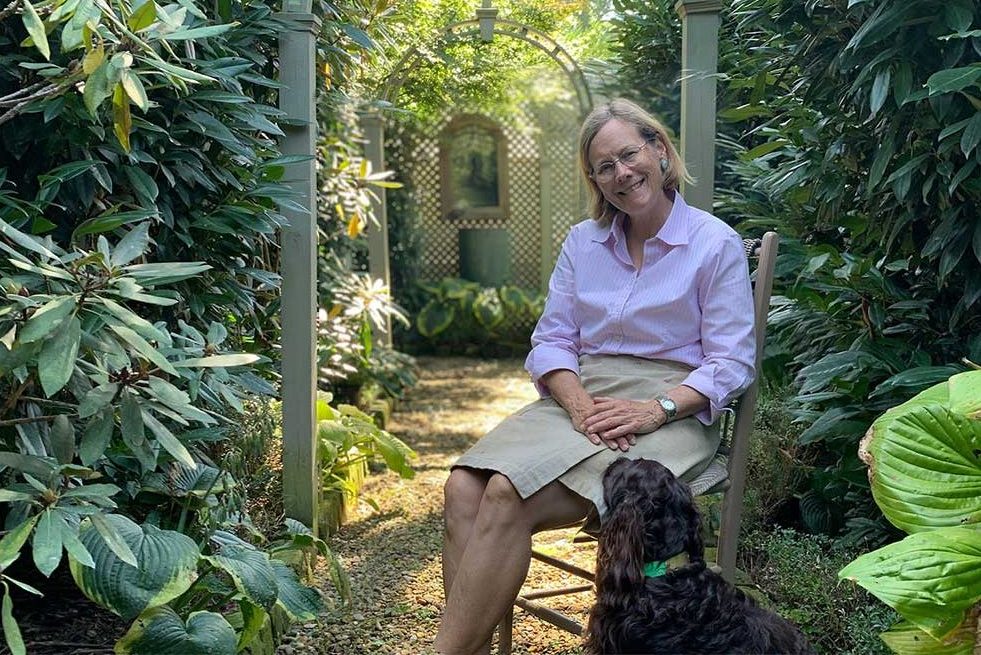The Quiet Radicalism of Wellness Landscapes: Reframing Residential Design for a Changing Climate

In recent years, residential landscapes have quietly evolved from aesthetic displays into sites of deeper purpose. With growing awareness of climate change and rising stress levels across generations, a new kind of garden has emerged – one that is not simply planted but lived in, one that cultivates both well-being and ecological sense.
This shift toward “wellness landscapes” is not a trend dressed up in ornamental foliage. It is a deliberate departure from passive design, where the yard was once a static backdrop, toward something more participatory, therapeutic, and ecologically relevant.
At the center of this movement is Mary Palmer Dargan, a licensed landscape architect whose four-decade career has consistently emphasized human-centered design rooted in botanical science, environmental psychology, and classical proportion. Her work does not seek to impress through spectacle. Instead, it calls for a reconsideration of what the home garden can mean when it is approached as an extension of both health and habitat.
A History That Grounded the Future
Wellness landscapes are often mistaken as a new phenomenon. In truth, their roots run deep. Cloister gardens of medieval Europe, Japanese healing gardens, and early American kitchen plots all embodied a sense of care, nourishment, and rhythm aligned with the human body and seasons. Dargan’s early work, including her master’s thesis on English kitchen gardens, drew from this history. She studied how gardens once fed, healed, and calmed communities before the age of chemical lawns and concrete patios.
Her focus was never nostalgia for its own sake. These studies offered her a framework for contemporary practice: gardens that serve as functional ecosystems and psychological sanctuaries. In Dargan’s view, the value of a landscape lies not only in its visual harmony, but also in its capacity to support a way of life – one marked by continuity with nature rather than dominance over it.
Gardens That Heal
The wellness garden speaks to a growing body of research connecting outdoor environments to physical and emotional health. Thoughtfully designed green spaces can lower cortisol levels, encourage movement, and create places for meaningful social interaction. Dargan’s concept of “Lifelong Landscape Design” expands this further. Her framework accounts for the evolving needs of homeowners over time, with special attention to aging-in-place. Wheelchair-friendly pathways, shaded seating, edible gardens, and quiet corners for reflection are not just aesthetic choices; they are infrastructure for a better life.
These landscapes are never static. Their beauty grows not just in bloom cycles but in their adaptability to the body and mind as they age. A well-placed fruit tree becomes both a source of food and memory. A curved path that once guided toddlers can later support the careful steps of an elder. This elasticity is what gives Dargan’s work its quiet brilliance. The garden becomes a living organism, responsive and relational.
Ecological Intelligence Without Performance
Much of today’s “green” design language is focused on appearance. Native plants, rain gardens, or pollinator habitats are often installed more for signaling environmental virtue than for any enduring ecological relationship. Dargan’s work avoids this pitfall by embedding ecological awareness into the DNA of the design process itself. She does not preach sustainability; she builds systems where sustainability is simply a matter of how things function.
For example, her emphasis on watershed-conscious planning means that the movement of water through a property is as carefully studied as its sunlight patterns. Soil health is not assumed, but analyzed. Plantings are chosen not just for beauty, but for their role in the overall ecology of the space, whether that means nitrogen fixation, erosion control, or feeding local bird species.
This attention to systemic health is what separates true wellness landscapes from decorative ones with environmental aspirations. The aim is not to create a set-piece, but a self-sustaining relationship between people and place.
Homeowner as Steward
In traditional landscape architecture, the homeowner is often removed from the process. Plans are drawn, projects are installed, and the professionals move on. Dargan has long resisted this model. Through her Placemakers Academy, she offers education that equips homeowners to understand and participate in their landscape design. This is not about casual gardening tips. It is about developing ecological literacy, knowing how your landscape breathes, drinks, shelters, and gives.
By framing the homeowner as a co-creator rather than a client, Dargan invites a more intimate and lasting connection to the land. The garden ceases to be an object of management and becomes a partner in living. This change in posture may be one of the most transformative aspects of her philosophy.
The Limits and the Promise
Wellness landscapes are not without limitations. They require time, understanding, and often a departure from conventional expectations. A garden built for life rather than immediate impact can challenge the aesthetics of real estate culture, which often favors instant appeal. There are also economic barriers. Not every homeowner can invest in a full redesign, even when the long-term benefits are clear.
But the promise of these spaces lies in their slowness. Gardens that unfold slowly and require steady care challenge the rush of everyday life. They don’t demand attention, but they quietly change the rhythm of those who tend them. They give something back, both to the people who live in them and to the ecosystems they inhabit.
A Different Measure of Success
Mary Palmer Dargan’s approach reframes what it means for a garden to succeed. It is not about symmetry or prestige. It is about creating environments that support vitality, cultivate belonging, and hold space for change. In her hands, landscape architecture becomes less about curb appeal and more about continuity between self and nature, body and land, past and future.
The garden, in this light, is no longer a luxury. It is a necessity. One capable of shaping not only how we live, but how well.



